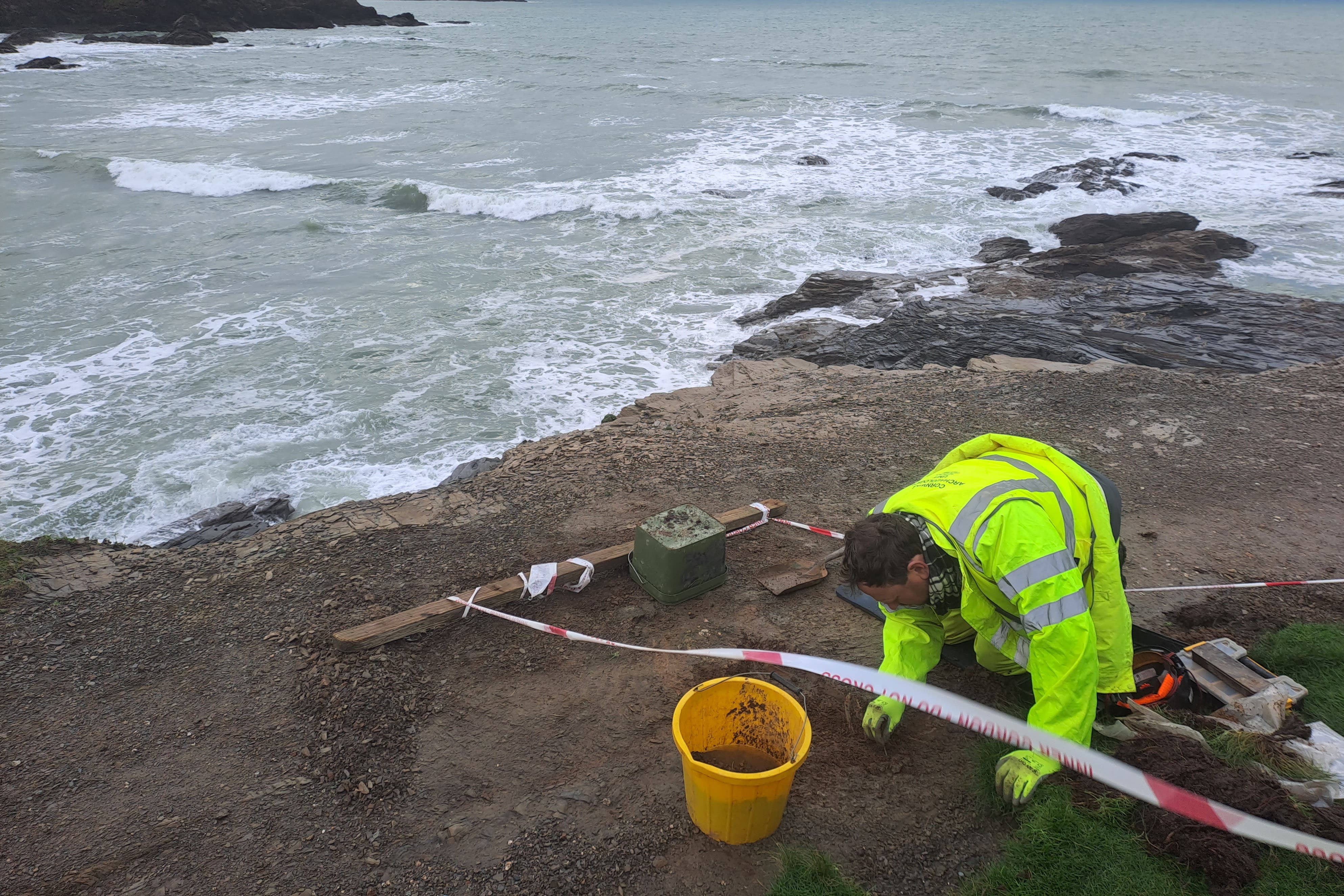Skeleton found on English coast may be 200-year-old shipwrecked sailor
The discovery at Trevone and overlooking Newtrain Bay, near Padstow, was made by a member of the public following erosion

Your support helps us to tell the story
From reproductive rights to climate change to Big Tech, The Independent is on the ground when the story is developing. Whether it's investigating the financials of Elon Musk's pro-Trump PAC or producing our latest documentary, 'The A Word', which shines a light on the American women fighting for reproductive rights, we know how important it is to parse out the facts from the messaging.
At such a critical moment in US history, we need reporters on the ground. Your donation allows us to keep sending journalists to speak to both sides of the story.
The Independent is trusted by Americans across the entire political spectrum. And unlike many other quality news outlets, we choose not to lock Americans out of our reporting and analysis with paywalls. We believe quality journalism should be available to everyone, paid for by those who can afford it.
Your support makes all the difference.The remains of a human skeleton discovered on a footpath on the north Cornish coast may have belonged to a shipwrecked sailor from the 18th or 19th centuries.
The discovery at Trevone and overlooking Newtrain Bay, near Padstow, was made by a member of the public following erosion.
Police and forensic experts attended the scene and established the remains were historic and the find was passed to Cornwall Council.
A bone specialist from the Cornwall archaeological unit carefully removed the skeleton for further investigations.
Ann Reynolds, from the council’s rural historic environment team, said: “The remains were located beside an area that is popular for memorial benches and floral tributes and were clearly visible within the coastal path.
“It was important to act swiftly, first to determine that they were archaeological in nature and then to carefully remove the remains, showing dignity to the deceased and to avoid any distress to visitors to the spot.”
It is believed the remains may have belonged to a shipwrecked sailor and could date back more than 200 years.
“Initial investigation has shown that the remains were of an adult, cut off just above the knees, potentially by the construction of an adjacent hedge,” Ms Reynolds said.
“Two bones have shown heavy wear patterns, suggesting an exceptionally well-developed upper body muscle mass. This may indicate a life of hard labour, pulling, pushing and lifting.
“Given the location of the remains on the cliff and near the notoriously dangerous approach to Padstow Harbour, it is possible that they are of a shipwrecked sailor, and if so, potentially date to before 1808, after which the Grylls Act decreed that drowned remains washed ashore should be buried in consecrated ground.”
Councillor Martyn Alvey, portfolio holder for environment and climate change at Cornwall Council, said: “I’d like to thank everyone who has been involved in this excavation and shown such care while carrying out their work.
“I hope that we can discover more about this individual before they are laid to rest once more.”
Further analysis of the remains will take place before reburial.
The Grylls Act or the Burial of Drowned Persons Acts 1808 and 1886 is an Act of Parliament that decrees that all bodies washed ashore from the sea should be buried in consecrated ground.
Prior to the act, remains were buried unceremoniously on the nearest cliff to the spot the deceased came ashore.
The Bill was drafted by Thomas Grylls, a Cornish solicitor, following the wreck of the frigate HMS Anson off Loe Bar in 1807.
Subscribe to Independent Premium to bookmark this article
Want to bookmark your favourite articles and stories to read or reference later? Start your Independent Premium subscription today.


